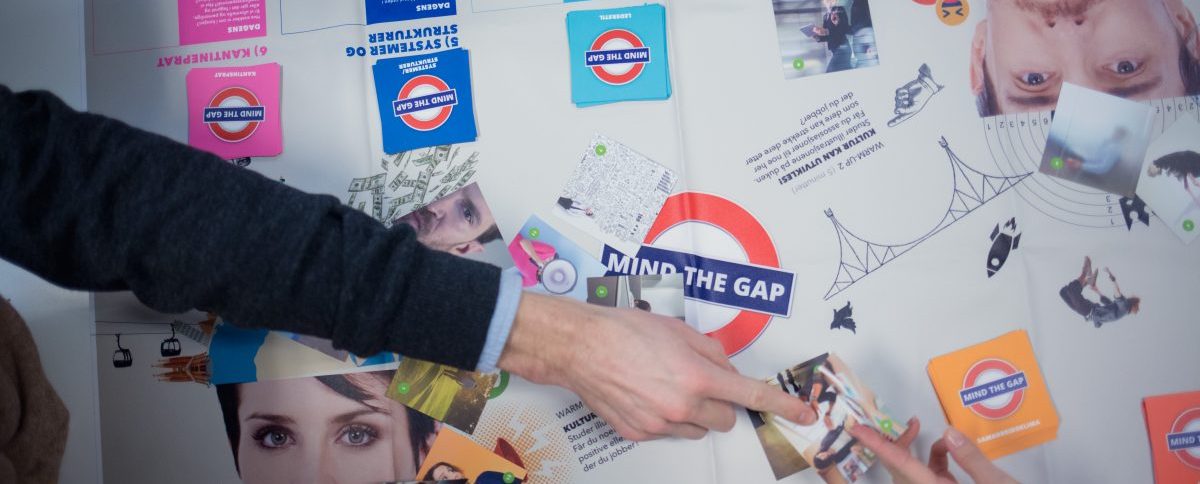Mind The Gap
Powerful implementation comes from a corporate culture that supports the business’ strategy. Mind the Gap is a slide show that involves employees in identifying the current corporate culture, and describing the culture the organization would need in order to achieve its goals.
A tool for long-term and systematic development of corporate culture
Mind the Gap invites your team to discuss, reflect and put into words the cultural gap within your organization. You will identify specific, concrete challenges and get input for improvements and measures that can be taken. The tool creates engagement and contributes to a good sense of culture both in individual groups and across the business. And the insights you glean from this process can help develop the business further, for example by defining values and management principles. This tool is especially useful when a new strategy is about to be implemented, values are being revitalized, or when you want to shine the spotlight on your own corporate culture.
The employees – part of the organizational culture
Mind the Gap is based on Edgar Schein’s theory of the development of organizational culture, where culture is an interplay between the strategy, the system/structure and the people. To work with culture, we need consistency between the elements. This means that if the strategy changes, the system and structure must be adapted, and we must ensure that people keep up.
Engage employees in identifying existing culture and defining the desired corporate culture
The tool consists of a game screen with associated image cards, and a digital reporting solution that makes it possible to extract a cultural report on the business, whether as a whole or in part. The culture gap exercise can be used on everything from a small group to gatherings with several hundred participants. The exercise takes about two hours, depending on how it is integrated with the organization’s change agenda.
The tool highlights six themes:
- Communication
- Collaborative climate
- Heroes
- Leadership style
- Systems and structures
- Canteen talk


